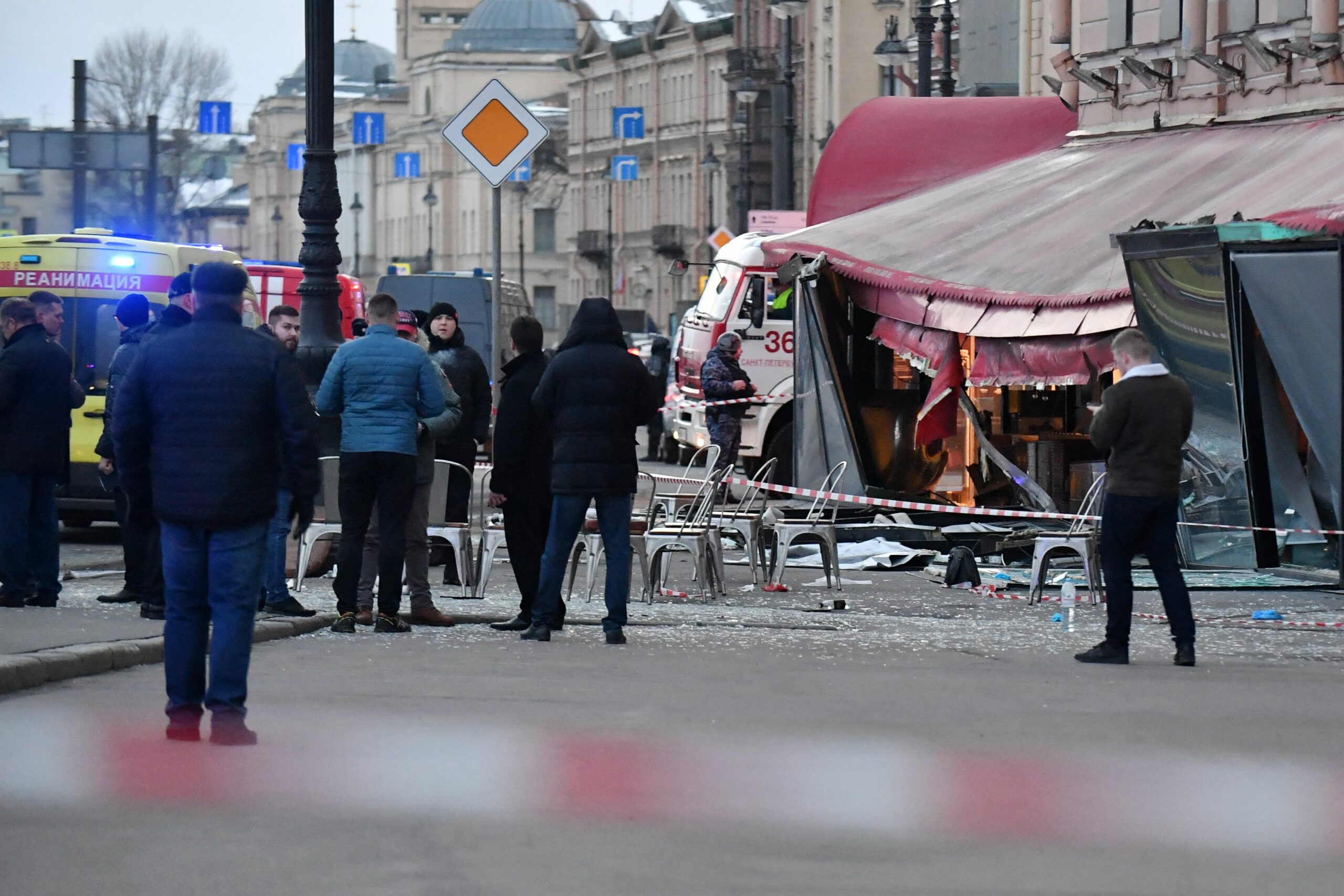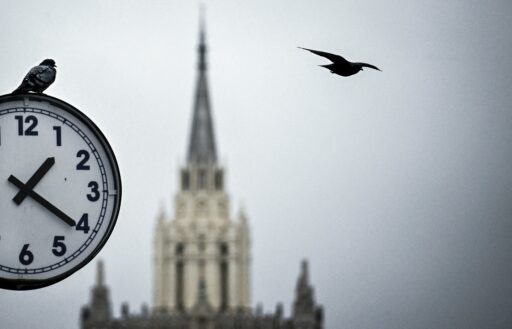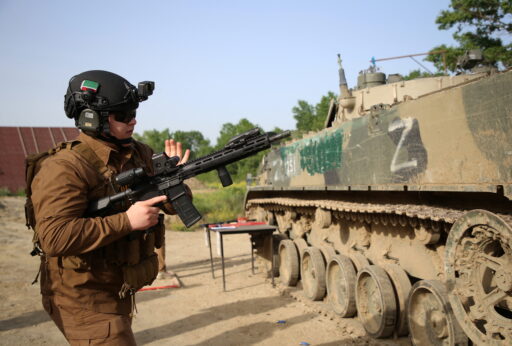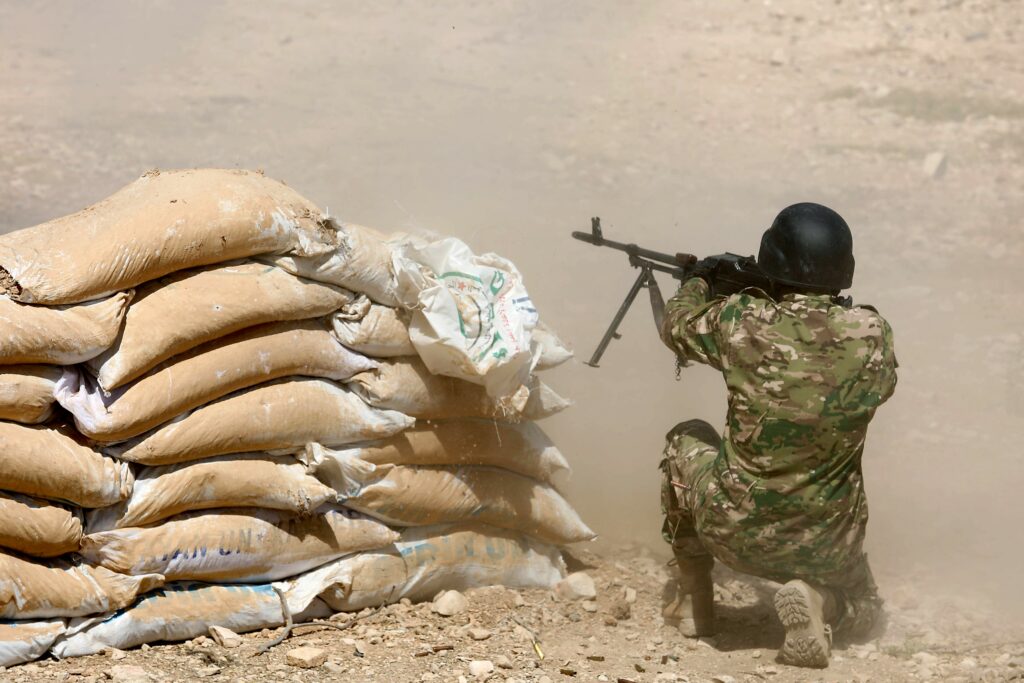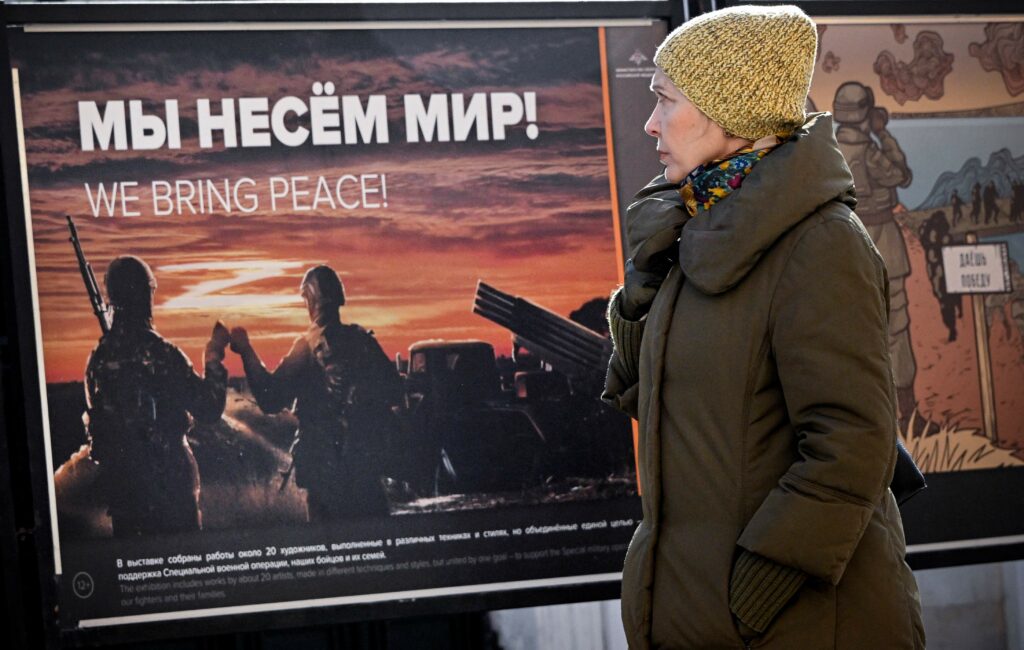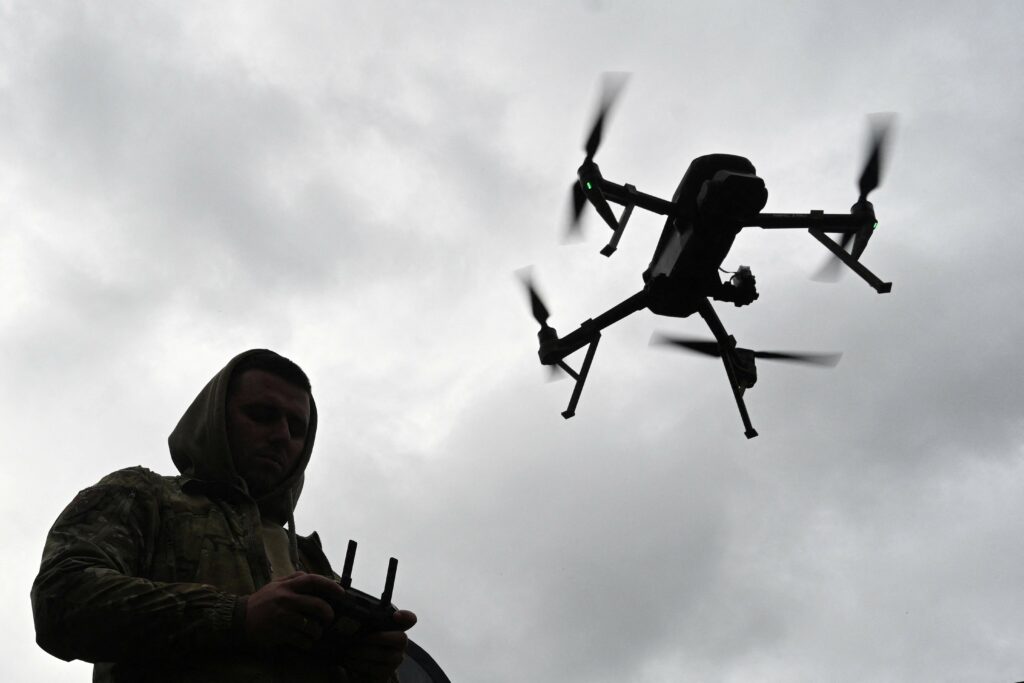Ukraine actively engages with Russians opposing Putin’s regime, forming volunteer units, encouraging desertion, and conducting symbolic special operations. These efforts increase pressure on Russian military structures and signal to Russians the possibility of resistance. However, despite the informational impact of certain actions, their scale remains limited. Amid Russia’s intense internal mobilization and repression, such initiatives are more demonstrative than drivers of systemic change.
Armed Russian Formations and Desertion
Since 2022, Ukraine has supported the creation and activities of volunteer units composed of Russian citizens opposing Vladimir Putin’s regime. One such unit is the Freedom of Russia Legion, formed in March 2022 following President Zelenskyy’s public call for foreign volunteers to join Ukraine’s armed forces. The legion comprises former Russian military deserters and political émigrés committed to armed struggle against Putin’s regime. Media reports suggest it includes dozens to hundreds of fighters, operating under Ukraine’s Main Intelligence Directorate (GUR) within the International Legion. In 2024, activist Ildar Dadin, the first Russian convicted for «repeated violations of protest regulations,» died in the legion. His death, along with his widow’s mentions of conflicts with the command, raised questions about the unit’s internal organization.
The International Legion, according to media estimates, has included citizens from over 50 countries, including the U.S., Canada, Georgia, Belarus, and Argentina, since the full-scale war began. Ukrainian authorities previously reported 20,000 foreign volunteers, though losses, dismissals, and waning Western interest likely reduced this number. Alongside the International Legion, the Russian Volunteer Corps (RDK) also fights on Ukraine’s side. Its exact size is unknown but appears to be a compact structure, likely no more than a few hundred fighters, primarily Russians with military, activist, or ultraright backgrounds, including former members of neo-Nazi and hooligan groups. The RDK’s leadership is linked to veterans of the Azov Battalion and other Ukrainian intelligence-affiliated structures.
The Freedom of Russia Legion and RDK, composed solely of Russian citizens, have become key tools for Ukraine in both military and informational-psychological aspects of the war. Their commanders claim logistical and intelligence support, equipment, and medical evacuation from Ukraine, though fighters say they primarily use captured Russian weapons. Ukraine officially denies controlling their actions on Russian territory, but Moscow insists these groups are puppets of Ukrainian and Western intelligence.
Russian authorities aggressively pursue citizens suspected of ties to the Freedom of Russia Legion or RDK, designating both as terrorist organizations. In June 2024, 15-year-old Arseniy Turbin was sentenced to five years in prison for attempting to join the legion and distributing anti-war leaflets. In St. Petersburg, Fyodor Konovalov and Ivan Ladchenko received 11-year sentences for distributing RDK and legion-branded leaflets. In Primorsky Krai, Sergey Osinovsky was sentenced to seven years for aiding the legion in planning an arson attack on a military enlistment office. RDK leaders Kirill Kanakhin and Denis Kapustin were sentenced in absentia to life imprisonment for treason and participation in a terrorist group. These cases highlight Russia’s harsh stance toward citizens accused of supporting or joining armed Russian units fighting for Ukraine.
Beyond forming armed units, Ukraine has targeted Russian military personnel directly. In August 2023, Ukrainian intelligence conducted one of the war’s boldest operations, persuading a Russian pilot to defect with his helicopter. After months of secret communication with GUR agents, a Russian Air Force pilot flew a Mi-8AMTSH helicopter to Ukraine’s Kharkiv region. The operation involved months of planning: Ukrainian agents contacted the pilot, evacuated his family from Russia, and ensured a safe flight route. Ukrainian special forces met him on arrival, and two unaware crew members were reportedly killed resisting. The helicopter, carrying parts for Russian fighters, was a valuable trophy. The pilot received a $ 500,000 reward under Ukraine’s program for defectors surrendering equipment.
The pilot, Maksim Kuzminov, met a tragic fate. In October 2023, he left Ukraine, declining further combat, and settled in Villajoyosa, Spain, under the alias Igor Shevchenko. On February 13, 2024, he was killed: two assailants shot him six times in a residential parking garage and ran over his body. The New York Times reported that Spanish police suspect professional hitmen, with betrayal as a likely motive. Kuzminov’s death, a symbol of Ukraine’s informational campaign, underscored the risks for those publicly siding with Kyiv.
Alongside military operations, Ukraine has developed psychological programs to undermine Russian troop morale. In September 2022, the I Want to Live initiative launched a hotline and chatbot for Russian soldiers seeking to surrender. Operating 24/7, it offers a safe way to exit combat and enter Ukrainian captivity under Geneva Conventions. Relatives of soldiers can also contact the program. By November 2024, it had received over 40,000 inquiries and recorded at least 350 confirmed surrenders.
Ukraine’s efforts with Russian citizens reflect a multifaceted strategy led by the GUR, spanning military cooperation, propaganda, and individual outreach to soldiers and officers. Despite the boldness and innovation of these methods, their impact remains limited. The number of defectors and volunteers is small compared to Russia’s military, and informational-psychological effects are sporadic. Still, the GUR persists in using all available resources to pressure Russia internally, aiming to gradually expand its vulnerabilities.
Russian Opposition Based in Ukraine
Since the full-scale invasion, Ukraine has become a haven for certain Russian opposition figures—dissidents, journalists, and former officials—who use its territory to deliver anti-war messages to Russian audiences. A prominent example is Ilya Ponomarev, a former Russian State Duma deputy (the only one to vote against Crimea’s annexation in 2014), who gained Ukrainian citizenship in 2019. In March 2022, Ponomarev launched February Morning, a Russian-language online TV channel aimed at undermining Putin’s regime. Based in Kyiv, it produces daily news, talk shows, and interviews, targeting Russians inside Russia rather than the émigré diaspora.
Media reports indicate February Morning employs about 70 staff, including Ukrainians and Russians, some operating anonymously from Russia. It broadcasts via YouTube and Telegram, a relatively free information source for Russians. Ponomarev claims a weekly audience of 10 million, 60% in Russia, though its reach is limited: its most-viewed 2022 video garnered 380,000 views, and April 2025 videos average 1,000 views. By comparison, Dozhd and Popular Politics attract tens to hundreds of thousands of views.
Ponomarev’s stated goal—overthrowing Putin’s regime—has been pursued through regional Morning media channels. One, Dagestan Morning, sparked riots in Makhachkala on October 28−29, 2023, after calls to «meet Israeli refugees» led to pogroms, attacks on police, and searches for Jews among passengers. Ponomarev later distanced himself from the channel, but his public statements and organizational role suggest indirect responsibility for a platform that spiraled into radical, including antisemitic, rhetoric.
Beyond media, some Russian opposition figures in Ukraine support sabotage inside Russia. Ponomarev’s team runs the Rospartisan Telegram channel, a hub for sabotage reports and coordination, posting daily updates on arson attacks on enlistment offices, railway sabotage, vandalism, and other anti-regime acts. It also shares manifestos and calls for armed struggle, including claims by the National Republican Army, which took responsibility for Darya Dugina’s killing.
Journalist and former National Bolshevik Party member Roman Popkov, a Rospartisan coordinator, was implicated in the 2023 killing of military blogger Vladlen Tatarsky. Russian investigators allege Popkov remotely guided Darya Trepova, who delivered a booby-trapped statuette to a St. Petersburg café. Trepova claimed in court she was unaware of the explosive and followed Popkov’s instructions. Her husband, Dmitry Rylov, publicly accused Popkov of manipulation. Popkov vowed to reveal the truth only after the war. While Rospartisan presents itself as a Russian initiative, its potential ties to Ukrainian intelligence raise ethical questions about involving unprepared individuals in guerrilla actions.
Despite their activity and creativity, projects like February Morning (179,000 YouTube subscribers in April 2024) and Rospartisan lag behind Dozhd (4.79 million subscribers) and Meduza (843,000). Ukraine supports these efforts, but they remain niche, effective in coordinating sabotage rather than shaping mass narratives.
Sabotage Inside Russia
Russia has faced a wave of mysterious fires, explosions, and transport sabotage targeting military sites, infrastructure, and war symbols, especially since the 2022 mobilization. Arson attacks on enlistment offices have occurred nationwide, with Mediazona reporting six fraud-driven attacks and 71 anti-war-motivated attacks in 2022. By 2023, a new trend emerged: many arsons were committed by Russians deceived by phone scammers. In December 2022, 34 arsons occurred in 10 days due to fake calls from supposed security officials. In July-August 2023, 37 attacks followed a similar pattern. By January 2025, fraud-related sabotage reached 187 cases.
Alongside this, attacks on railways—a critical component of Russian military logistics—are taking place. Since 2022, there have been documented cases of rail track explosions, damage to signaling equipment, and train derailments, including in the Bryansk and Belgorod regions, as well as in Siberia. Underground groups like Stop the Wagons and the Combat Organization of Anarcho-Communists (BOAK) claimed some attacks.
In May 2023, saboteurs derailed a freight train in Bryansk, and in November 2023, a major explosion hit the Severomuysky Tunnel on the Trans-Siberian Railway, which British intelligence attributed to Ukrainian special services. A September 2024 explosion targeted a railway bridge in Samara (Kinel). Fires have also hit oil depots, research institutes, and power substations. GUR head Kyrylo Budanov hinted at an agent network in Russia, though Ukraine officially denies responsibility for sabotage on Russian soil.
Early in the war, much sabotage was spontaneous, driven by moral conviction without Ukrainian coordination. Perpetrators faced harsh penalties (15−20 years for terrorism). By mid-2023, repression and demoralization reduced such acts. By 2024, sabotage shifted to coordinated or fraud-driven attacks. Sabotage is a notable element of hybrid warfare, likely partially coordinated by Ukrainian intelligence, but the rise of fraud-driven attacks—exploiting trust and fear—raises ethical concerns, blurring the line between resistance and manipulation. While decentralized resistance may be strategic, the effectiveness and humanity of some methods require reevaluation.
Conclusion
Ukraine’s strategy of engaging Russians against Putin’s regime has yielded results: volunteer units formed, high-profile defections executed, and the I Want to Live program facilitated surrenders. These measures pressured Russia’s political system but had limited impact. Few Russians defected, and anti-war sentiment in Russian forces remained disorganized. Sabotage inside Russia, from arsons to infrastructure attacks, was partly Ukrainian-coordinated, but many acts involved deceived citizens via fraud, raising ethical questions about resistance versus manipulation.
Future prospects are uncertain. Russia’s intensified repression limits anti-war participation, but Ukraine will likely continue leveraging Russians for pressure—through media, defectors, or sabotage. The potential hinges on Russians’ willingness to risk involvement, Ukraine’s recruitment infrastructure, and these actions’ ability to sway Russian public sentiment. For now, they remain tools of targeted impact rather than drivers of broad destabilization.
